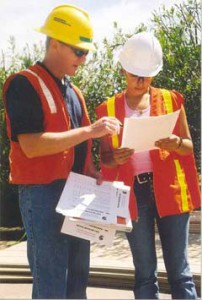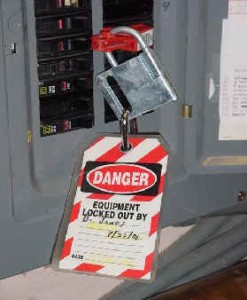Ambiguous regulations increase risks for temporary workers

Temporary workers may not receive adequate training on safety issues such as the fall protection worn by this worker. (Photo by Greg Younger.)
Temporary workers, who are appointed to employers by staffing agencies, inhabit a confusing space in the American workforce: They can have a “first day” at a new job every week. Their day-to-day work is managed by one employer, yet they are paid by another. And they may, or may not, receive training from one or both.
There’s growing evidence that, within the foggy division between where a staffing agency’s responsibilities end and the host employer’s begin, there’s a crack in safety training that’s claiming the lives of many temporary workers.
While a lack of training in some industries might not expose a temporary employee to health hazards, in fields such as construction and manufacturing, it can be deadly. David Michaels, assistant secretary of labor for Occupational Safety and Health, reported in June that at least 14 temporary blue-collar workers had died during their first day at a new worksite over the previous 12 months. Temporary workers also face a greater risk of non-fatal injuries than workers who are permanently employed by a company, according to OSHA.

As part of OSHA’s Temporary Worker Initiative, compliance officers have been directed to identify temporary workers, determine if they received safety training and ascertain if they were “exposed to a violative condition.” (Photo from alliancelosscontrol.com.)
At the same time, the number of temporary workers has been on the rise. In July, the number of “temporary help” jobs was up nearly seven percent over last year, according to the Bureau of Labor Statistics.
In light of these numbers, in April, the Occupational Safety and Health Administration launched a campaign of “enforcement, outreach and training” in hopes of identifying the problem and providing better protection for these temporary workers.
A prime issue seems to be who is responsible for providing safety training. From OSHA’s perspective, both are considered “employers” and are therefore responsible for ensuring that OSHA’s training, hazard communication and recordkeeping requirements are met. But organizations including the American Staffing Association have asked for greater clarification. In an interview with Bloomberg, Stephen Dwyer, general counsel for the ASA, said the organization is hoping to find “a common understanding with OSHA about the responsibilities of staffing agencies and the companies that control the workers when they are at the job site.” According to the article, a typical question might involve when staffing agencies or “controlling employers” are responsible for recording an injury in an OSHA Form 300 log.
This ambiguity is partly to blame when temporary workers fail to receive basic safety training covering topics such as lockout/tagout procedures, fall protection and heat stroke, Michaels has said.

A lack of training in lockout/tagout procedures contributed to the death of a temporary worker this past year. (Photo from ohsguide.worksafenb.ca.)
Ultimately, OSHA plans to work with staffing agencies and host employers to develop best practices that might include: safety training, orientation and worksite hazard assessments provided by both agencies and host employers; regular communication between the agency, employee and host employer; guidelines for when each entity is responsible for injury and illness bookkeeping; and on-site safety evaluations by staffing agencies.
[raw]
Category: News, News / New Products, OSHA















